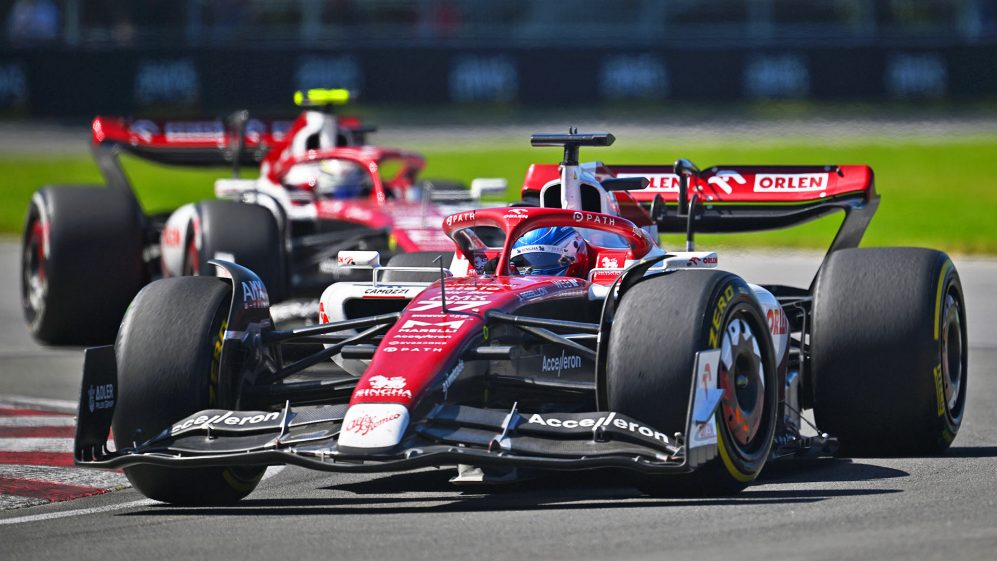Table of Contents
Formula 1 is a sport that has been around for over 100 years and is the pinnacle of motorsport, yet despite its age, it does not reach the same heights as the Super Bowl odds. Many things make up a Formula 1 car, and each team spends millions of dollars and hours constructing and developing their cars.
Cars in Formula 1 are some of the most technologically advanced and sophisticated machines on the planet. They are purpose-built, fine-tuned racing machines to deliver the ultimate performance and speed you’ll enjoy.
Here is everything you need to know about cars in Formula 1.
The Basics
Formula 1 cars are single-seater, open-wheel race cars. They are the pinnacle of motorsport and are the fastest and most technologically advanced machines on the planet.
All Formula 1 cars must meet the FIA’s strict safety standards the sport’s governing body sets. These standards cover everything from the car’s construction to the materials used.
Extremely high-tech and powerful engines power formula one cars. These engines can deliver up to 15000rpm and generate significant amounts of power.
Chassis
All Formula 1 cars must have a monocoque chassis. This is a strong and stiff structure that forms the main shell of the car. It has a variety of materials, including carbon fiber and aluminum.
The chassis is the foundation upon which the rest of the car gets built. It must be strong enough to withstand the enormous loads of the car’s powerful engine and downforce-generating aerodynamics.
Suspension
Formula 1 cars have highly sophisticated suspension systems. These maximize grip and handling and keep the tires in contact with the ground.
The front and rear suspension systems are different, as the weight distribution of a Formula 1 car is biased towards the rear. This is because the engine is in the front of the car.
Wheels and Tires
Formula 1 cars run on specialized racing tires designed to withstand the high loads and speeds generated by the car. These tires come from just two companies – Pirelli and Michelin.
The wheels of a Formula 1 car come from magnesium alloy. They are lightweight and robust and can be very expensive.
Brakes
Formula 1 cars have extremely powerful brakes. These slow the car down from high speeds and bring it to a stop in a short distance.
The brakes have hydraulic pressure, and the discs have carbon fiber. This material is resistant to the high temperatures generated by the brakes.
Engine

The engine is the heart of a Formula 1 car. It is highly sophisticated machinery capable of delivering up to 15000rpm.
Today’s Formula 1 engines have a limit of a maximum of 18000rpm. This protects the engine from the immense loads generated by the car.
The engine is in the front of the car and drives the rear wheels. It connects to the gearbox via a driveshaft.
Gearbox
The gearbox is a vital part of a Formula 1 car. It is responsible for transmitting the power from the engine to the wheels.
The gearbox is in the car’s rear and connected to the engine via a driveshaft. It contains eight gears and gets operated by the drivers via paddle shifters on the steering wheel.
Aerodynamics
Aerodynamics plays a vital role in the performance of a Formula 1 car. The car’s bodywork produces downforce, pushing the car onto the track and increasing grip.
All Formula 1 cars must have a front and rear wing. These are in the car’s bodywork and create downforce when moving forward.
The lower the car is to the ground, the more efficient the aerodynamics are. This is why Formula 1 cars have adjustable suspension, which allows the lowering of the car for qualifying and raised for the race.
Safety
Safety is of paramount importance in Formula 1. The sport’s governing body, the FIA, has strict safety standards that all cars and drivers must meet.
The car’s design is as safe as possible. They have strong monocoque chassis, rear-view cameras, and accident data recorders.
The drivers have a variety of safety devices, including fire-proof racing suits, helmets, and neck supports.
Formula 1 cars have safety devices to protect drivers in an accident. These include the “halo” device, a metal ring that surrounds the cockpit, and the “virtual safety car” system, which controls the speed of the cars during periods of danger.
Verdict
Formula 1 cars are the pinnacle of motorsport technology. They are purpose-built racing machines designed to deliver the ultimate performance and speed.
That is everything you need to know about cars in Formula 1. Each team spends millions of dollars and hours developing and constructing their cars to compete. The cars are constantly evolving, and each team is always looking for ways to improve their performance.
Image Credits: Formula1.com & F1Chronicle.com

